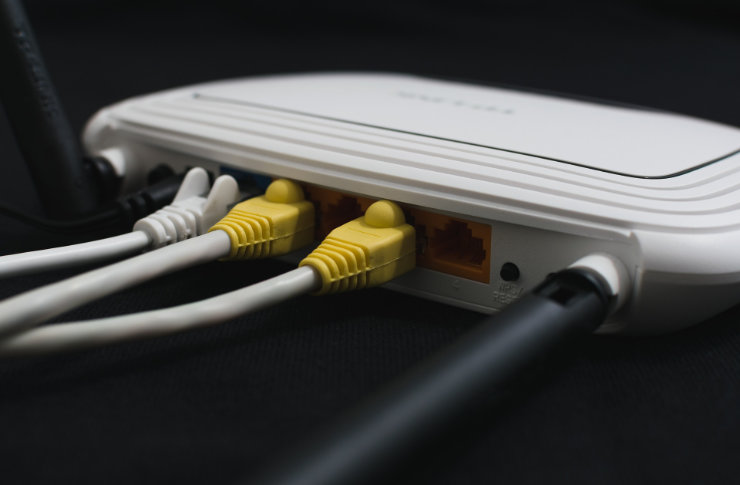Redefining Internet Speed: The Promise of Terahertz Wireless Communication
In an era where connectivity is paramount, the quest for faster, more efficient internet continues unabated. Enter terahertz wireless communication, a groundbreaking technology poised to revolutionize the way we connect and communicate. This cutting-edge innovation harnesses the power of terahertz waves, offering unprecedented data transfer speeds and bandwidth capabilities. As we stand on the cusp of this transformative technology, let's explore its potential to reshape our digital landscape and usher in a new age of lightning-fast connectivity.

The journey to harness terahertz waves for communication has been arduous. For decades, scientists grappled with the challenges of generating and detecting these elusive waves. However, recent advancements in materials science and nanotechnology have brought terahertz communication within reach, opening up exciting possibilities for ultra-high-speed wireless networks.
The Technological Leap
Terahertz wireless communication represents a quantum leap in connectivity technology. Traditional wireless systems operate in the gigahertz range, but terahertz waves operate at frequencies up to 1000 times higher. This exponential increase in frequency translates to a dramatic boost in data transfer capacity.
To put this into perspective, while current 5G networks aim for speeds of up to 20 Gbps, terahertz communication could potentially achieve speeds of 1 Tbps or more. This staggering increase would enable the transfer of massive amounts of data in mere seconds, revolutionizing everything from mobile communications to industrial applications.
Overcoming Technical Hurdles
Despite its immense potential, terahertz communication faces several technical challenges. One of the primary obstacles is signal attenuation. Terahertz waves are easily absorbed by moisture in the air, limiting their effective range. Researchers are exploring various solutions, including the development of novel materials that can efficiently generate and detect terahertz waves, as well as advanced signal processing techniques to overcome atmospheric absorption.
Another challenge lies in the development of compact, energy-efficient terahertz transmitters and receivers. Current prototypes are often bulky and power-hungry, making them impractical for widespread deployment. However, ongoing research in semiconductor technology and photonics is yielding promising results, bringing us closer to commercially viable terahertz communication systems.
Applications and Impact
The potential applications of terahertz wireless communication are vast and transformative. In the realm of consumer technology, it could enable seamless streaming of ultra-high-definition content, virtual reality experiences with unprecedented realism, and instantaneous cloud access. For businesses, terahertz networks could facilitate real-time collaboration on massive datasets, revolutionizing fields like scientific research, financial modeling, and digital content creation.
In healthcare, terahertz communication could enable remote surgery with near-zero latency, allowing specialists to operate on patients from across the globe. The technology also holds promise for security and imaging applications, as terahertz waves can penetrate many materials that are opaque to visible light, potentially revolutionizing airport security screenings and non-destructive testing in manufacturing.
Regulatory Landscape and Standardization
As with any emerging technology, the development of terahertz communication necessitates careful consideration of regulatory frameworks. Currently, most of the terahertz spectrum remains unallocated, presenting both opportunities and challenges. Regulatory bodies worldwide are beginning to explore how to effectively manage and allocate this spectrum to support innovation while ensuring fair access and preventing interference.
Standardization efforts are also underway, with organizations like the IEEE working on developing standards for terahertz communication systems. These standards will be crucial in ensuring interoperability between different terahertz devices and networks, paving the way for widespread adoption.
Environmental and Health Considerations
As terahertz technology moves closer to real-world deployment, questions about its environmental impact and potential health effects are coming to the forefront. Unlike lower frequency waves used in current wireless systems, terahertz waves do not penetrate deeply into biological tissues, potentially reducing concerns about radiation exposure. However, comprehensive studies are still needed to fully understand any long-term effects.
From an environmental perspective, the high data rates enabled by terahertz communication could lead to more energy-efficient data transfer, potentially reducing the carbon footprint of digital communications. However, the increased power requirements of terahertz systems will need to be carefully balanced against these potential gains.
The Road Ahead
While terahertz wireless communication is still in its early stages, the pace of development is accelerating. Research institutions and tech companies around the world are investing heavily in this technology, recognizing its potential to drive the next wave of digital innovation.
As we look to the future, it’s clear that terahertz communication will play a crucial role in shaping our connected world. From enabling new forms of human-computer interaction to facilitating breakthroughs in scientific research, this technology has the potential to transform nearly every aspect of our digital lives.
The journey towards widespread adoption of terahertz communication will undoubtedly be filled with challenges, but the potential rewards are immense. As researchers continue to push the boundaries of what’s possible, we stand on the brink of a new era in connectivity – one where the limitations of bandwidth and speed become a thing of the past, and the full potential of our digital world can finally be realized.





